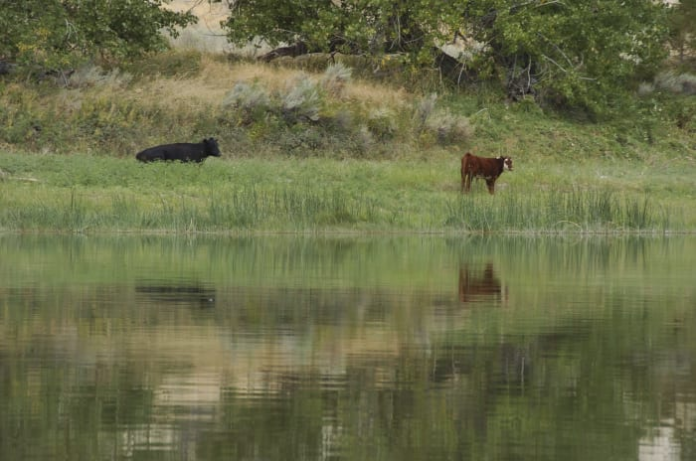FILE – Cows graze along a section of the Missouri River that includes the Upper Missouri River Breaks National Monument on Sept. 19, 2011, near Fort Benton, Mont. The Biden administration on Thursday, April 18, 2024, finalized a proposed rule thats meant to put conservation on equal footing with drilling, grazing and other uses of U.S.-owned lands, primarily in the West. (AP Photo/Matthew Brown, File)
BILLINGS, Mont. – The Biden administration on Thursday finalized a new rule for public land management that’s meant to put conservation on more equal footing with oil drilling, grazing and other extractive industries on vast government-owned properties.
Officials pushed past strong opposition from private industry and Republican governors to adopt the proposal.
Recommended Videos
The rule from the Interior Department’s Bureau of Land Management — which oversees more than 380,000 square miles (990,000 square kilometers) of land, primarily in the U.S. West — will allow public property to be leased for restoration in the same way that oil companies lease land for drilling.
The rule also promotes the designation of more “areas of critical environmental concern” — a special status that can restrict development. It’s given to land with historic or cultural significance or that’s important for wildlife conservation.
The land bureau has a history of industry-friendly policies and for more than a century has sold grazing permits and oil and gas leases. In addition to its surface land holdings, the bureau regulates publicly-owned underground mineral reserves — such as coal for power plants and lithium for renewable energy — across more than 1 million square miles (2.5 million square kilometers).
Interior Secretary Deb Haaland said the changes would “restore balance” to how the U.S. government manages its public lands. The new rule continues the administration’s efforts to use science to restore habitats and guide “strategic and responsible development,” Haaland said in a statement.
But Republican lawmakers and industry representatives blasted the move as a backdoor way to exclude mining, energy development and agriculture from government acreage that’s often cheap to lease. They assert the administration is violating the “multiple use” mandate for Interior Department lands, by catapulting the “non-use” of federal lands — meaning restoration leases — to a position of prominence.
“By putting its thumb on the scales to strongly favor conservation over other uses, this rule will obstruct responsible domestic mining projects,” said National Mining Association President Rich Nolan.
The rule’s adoption comes amid a flurry of new regulations from the Biden administration as the Democrat seeks reelection to a second term in November.
Government agencies in recent weeks tightened vehicle emissions standards to cut greenhouse gas emissions, finalized limits on PFAS chemicals in drinking water and increased royalty rates for oil companies that drill on public lands.
About 10% of all land in the U.S. falls under the Bureau of Land Management’s jurisdiction, putting the agency at the center of arguments over how much development should be allowed on public property.
Environmentalists largely embraced the changes adopted Thursday, characterizing them as long overdue.
Trout Unlimited President Chris Wood said conservation already was part of the land bureau’s mission under the 1976 Federal Lands Policy Management Act. The new rule, he said, was “a re-statement of the obvious.”
“We are pleased to see the agency recognizing what the law already states — conservation is a vital use of our public lands,” he said.
Wyoming Sen. John Barrasso, a staunch Biden critic, on Thursday said he will introduce legislation to repeal the public lands rule. The Republican lawmaker alleged it would block access to areas that people in Wyoming depend on for mineral production, grazing and recreation.



